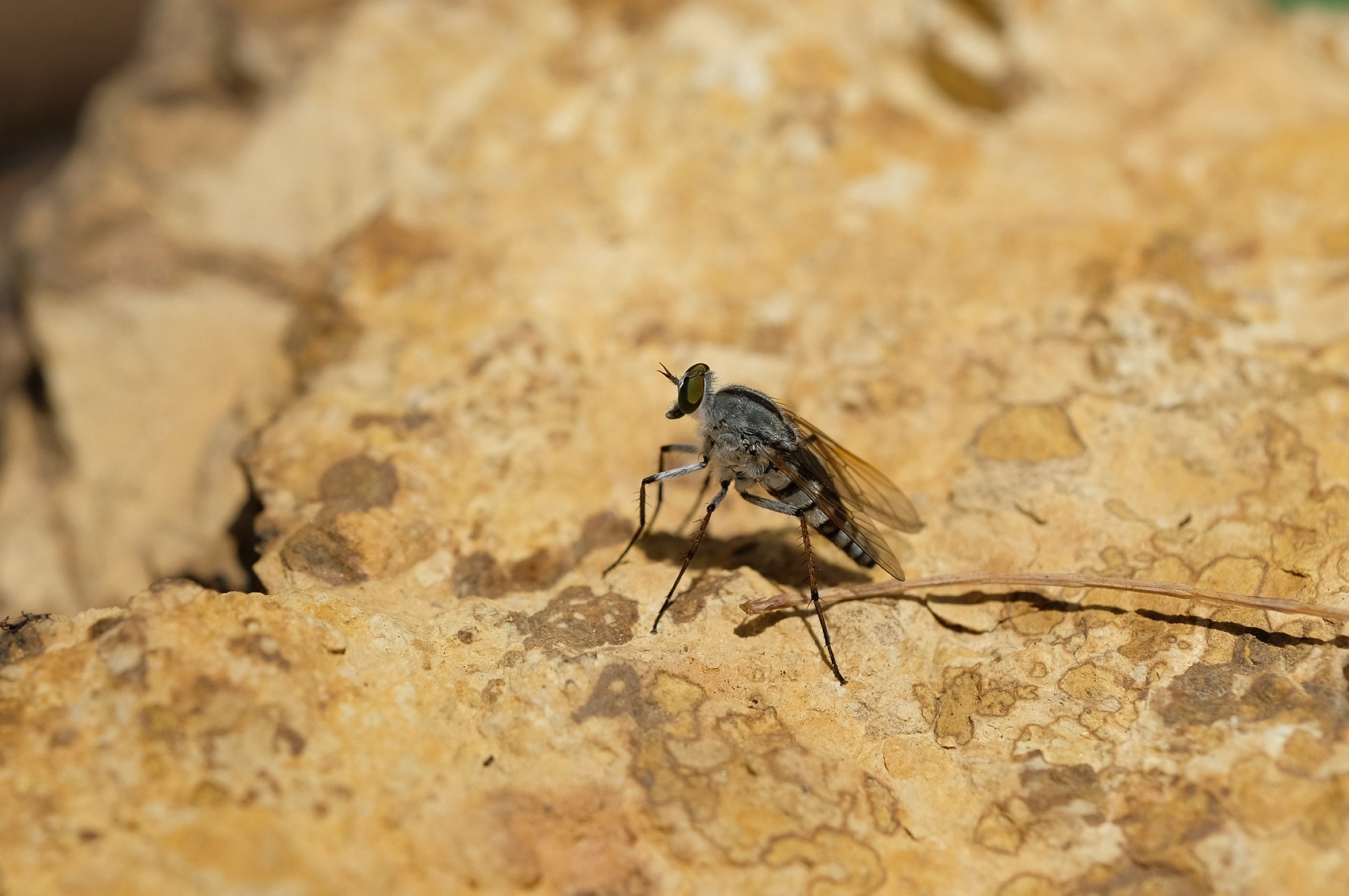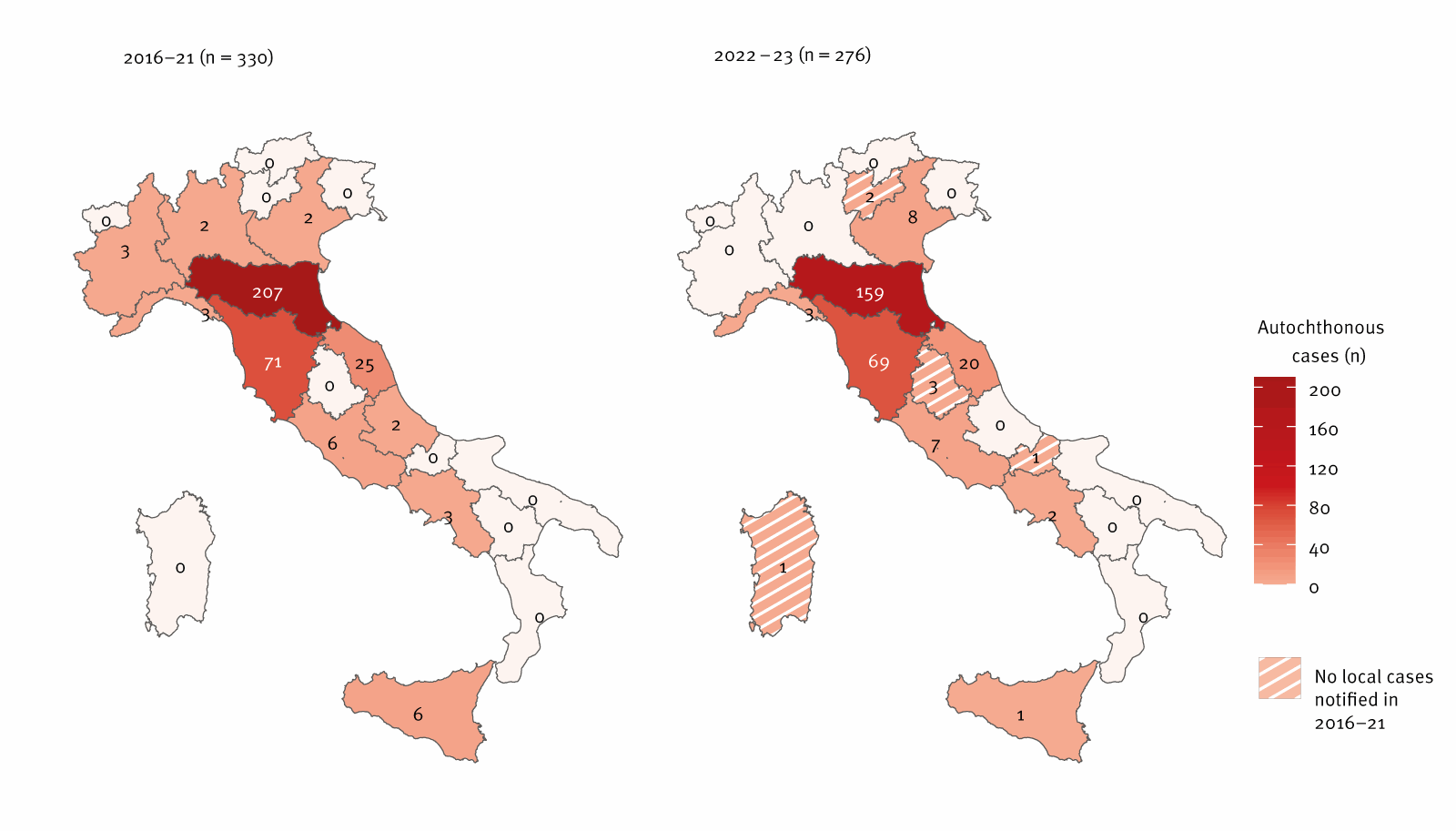With cases soaring nearly 2.6 times higher than in previous years, experts warn that climate change and expanding transmission zones are fueling the rise of neuroinvasive Toscana virus infections in Italy.
 Study: Human neuroinvasive Toscana virus infections in Italy from 2016 to 2023: Increased incidence in 2022 and 2023. Image Credit: Pattarawat Loharnchoon / Shutterstock
Study: Human neuroinvasive Toscana virus infections in Italy from 2016 to 2023: Increased incidence in 2022 and 2023. Image Credit: Pattarawat Loharnchoon / Shutterstock
A recent study published in the journal Eurosurveillance investigated the rising incidence of neuroinvasive Toscana virus (TOSV) infections in Italy, focusing on the period from 2016 to 2023, with particular attention to 2022 and 2023. TOSV, transmitted by sand flies, is a significant cause of disorders related to the central nervous system in the Mediterranean region. The research analyzed infection trends, geographic distribution, and risk factors, aiming to improve public health measures and awareness.
Toscana virus
Toscana virus is a sand fly-transmitted arbovirus found predominantly in Mediterranean countries. During the summer, it is a leading cause of central nervous system infections, including meningitis and encephalitis. While most infections are asymptomatic or cause mild illness, some severe neuroinvasive cases highlight the virus’s significant health impact.
While the natural reservoirs of TOSV remain unclear, humans are considered incidental hosts. The virus’s transmission correlates strongly with sand fly activity, which peaks in warmer months, especially in regions with suitable environmental conditions. Furthermore, previous studies have revealed high seroprevalence in endemic areas, underscoring the widespread risk. However, the study highlights that neuroinvasive TOSV infections remain underreported outside of Italy, with no standardized surveillance measures across the European Union.
Despite its public health relevance, TOSV remains underreported and under-researched, with limited surveillance outside Italy. The absence of a vaccine or specific treatment further emphasizes the need for preventive strategies. Moreover, climate anomalies, including record-high temperatures and prolonged dry periods in 2022, are suspected to influence vector activity and disease transmission, but the specific impacts on TOSV dynamics remain inadequately understood.
The current study
In the present study, the research team from Sweden and Italy utilized data from Italy’s national surveillance system for neuroinvasive TOSV infections, established in 2016. The data covered cases from 2016 to 2023, focusing exclusively on laboratory-confirmed neuroinvasive infections.
Physicians reported cases based on specific clinical criteria, which included fever and central nervous system involvement, such as meningitis or encephalitis, and were confirmed by laboratory diagnostics. Confirmation required TOSV detection in cerebrospinal fluid, other biological samples, or serological evidence such as antibody presence or seroconversion.
The TOSV cases were categorized as autochthonous (locally acquired) or introduced based on travel history and probable exposure locations. Numerous surveillance reforms were implemented in 2020 as part of the National Plan for Prevention, Surveillance, and Response to Arboviruses 2020–2025 to improve case reporting through an online platform, standardized forms, and uniform diagnostic criteria, which enhanced the data consistency for the present study.
Additionally, geographic data were stratified by region, urbanization level, and year. Population data from the Italian National Institute of Statistics were used to calculate incidence rates. The study also considered climatic factors such as temperature anomalies and reduced precipitation, which were linked to increased sand fly survival and prolonged transmission seasons.
The study employed descriptive and statistical analyses, including negative binomial regression models, to evaluate trends, seasonal patterns, and associations with demographic and environmental risk factors. The researchers adjusted temporal trends for coronavirus disease 2019 (COVID-19)-related restrictions, which likely affected infection rates and reporting during 2020–2021.
The analysis also examined geographical spread, highlighting regions with increasing cases and previously unaffected areas. By comparing the periods 2016–2021 and 2022–2023, the study aimed to identify changes in disease dynamics and population groups at higher risk.

Geographical distribution of confirmed autochthonous cases of neuroinvasive Toscana virus infection, Italy, 2016–2023 (n = 606 cases) Plotted numbers correspond to the cumulative number of cases by region/autonomous province (AP) of infection/exposure for each period (as notified in the national surveillance system). For 2016–21, a total of 330 cases are plotted rather than 331 as one case did not have an identified region of infection/exposure. Data are up to January 2024. A detailed map with the regions/APs of Italy is provided in Supplementary Figure S2. The striped pattern signifies regions/APs where neuroinvasive infections were acquired for the first time in 2022 or 2023, according to notifications/case investigations for the period 2016–23.
Major findings
The results suggested that neuroinvasive TOSV infections in Italy increased significantly from 2022 to 2023 compared to 2016 to 2021, with a nearly 2.6-fold rise in incidence. The average annual incidence was 2.34 per million between 2022 and 2023, compared to 0.92 per million during the earlier period. Furthermore, cases from 2022 to 2023 also extended into autumn, with high numbers persisting in September.
Geographically, the infections were most common in north-central regions, particularly Emilia-Romagna and Tuscany. However, cases were also reported in new regions, including Sardinia, Molise, Umbria, and Trento, from 2022 to 2023, highlighting an expanded distribution. The study found that males, individuals between the ages of 19 and 67, and residents of rural municipalities were at higher risk, with rural areas showing a nearly threefold higher infection rate compared to urban areas. Notably, the study also identified individuals over 67 years as another high-risk group, with an incidence risk ratio of 5.06 compared to younger age groups.
Additionally, reduced precipitation in 2022, along with higher temperatures, were believed to have contributed to increased sand fly activity and prolonged transmission seasons. These conditions supported vector survival and activity, elevating transmission risks. The seasonal patterns were consistent, with most cases occurring between June and October, peaking in August.
The study noted that improved surveillance, including standardized reporting and diagnostic practices, might have partially contributed to the observed increase in case numbers. However, the data strongly suggested an actual rise in TOSV transmission, influenced by environmental and demographic factors. In addition, the COVID-19 pandemic in 2020–2021 led to a decline in reported cases, likely due to restrictions on mobility and healthcare access, which reduced exposure and detection.
Conclusions
The findings reported a substantial rise in neuroinvasive TOSV infections in Italy during 2022 and 2023, influenced by environmental factors such as climate change and expanded geographic distribution of the virus and its vector. Male sex, age over 67 years, and rural residency were factors that increased the risk of acquiring the infection.
These results emphasized the importance of public awareness, vector control, and clinician vigilance in high-risk regions and seasons. The researchers stated that raising awareness among healthcare providers and strengthening surveillance and preventive measures are critical for mitigating the region’s growing public health burden of TOSV.
Journal reference:
- Fotakis Emmanouil Alexandros, Di Maggio Elisa, Del Manso Martina, Mateo-Urdiales Alberto, Petrone Daniele, Fabiani Massimo, Perego Giulia, Bella Antonino, Bongiorno Gioia, Bernardini Ilaria, Di Luca Marco, Venturi Giulietta, Fortuna Claudia, Giannitelli Stefania, Ferraro Federica, Maraglino Francesco, Pezzotti Patrizio, Palamara Anna Teresa, Riccardo Flavia, Italian Arbovirus Surveillance network. Human neuroinvasive Toscana virus infections in Italy from 2016 to 2023: Increased incidence in 2022 and 2023. Euro Surveill. 2025;30(2):pii=2400203. DOI: 10.2807/1560-7917.ES.2025.30.2.2400203, https://www.eurosurveillance.org/content/10.2807/1560-7917.ES.2025.30.2.2400203




